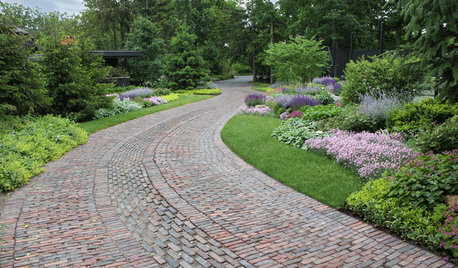Pondering Parentage, and Class II
The Pondering Parentage thread brought up several more Ralph Moore roses which are puzzles. Dancing Doll, Pink Cameo, Renae, Carolyn Dean, Everbloom 1 and Candy Cane are all quite versatile, interesting roses Mr. Moore released over the course of his breeding career.
He had a Dancing Doll which grew for decades in the mixed border of Camellia, Myrtle, Hydrangea, Japanese Maple and other assorted shrubs in the front of his house along the drive. It used the other very tall bushes to support itself until it became strong enough to stand by itself. It flowered much of the year and was easily seven to eight feet tall with about a four to five foot spread. I love that line from Etoile Luisante. It made some very interesting roses and resulted in my Annie Laurie McDowell.
This is the line there is disagreement over its parentage. Nearly sixty years ago, Sequoia registered them as Etoile Luisante X Sierra Snowstorm, a Moore hybrid shrub of rather interesting parentage. Unfortunately, it's been extinct for many decades. Half of a century later, Mr. Moore's memory recalled it as being a self seedling of Etoile Luisante. EL has no listed parentage, but its nickname of "Baby Herriot" gives some interesting clues. Mme. Edouard Herriot was an early Pernetiana HT, hence based up R. Foetida. Etoile Luisante resembled it in color. That and the quality of foliage possible from its offspring make me believe it was a poly with strong Foetida background. There was much exploration in that direction early in the Twentieth Century.
Sierra Snowstorm was the product of Gloire des Rosomanes and Dorothy Perkins. My Annie Laurie McDowell is an open pollinated seedling from Renae. If Renae and her sisters were self seedlings of Etoile Luisante, how did Annie Laurie McDowell inherit foliage so incredibly similar in shape, color and texture to Gloire des Rosomanes? How did their petal substances and scent come to resemble each other so greatly? If you grow both close to one another to study them, you will quickly see a strong family resemblance. Taking that one step further, also add Grandmother's Hat to the study. There are very strong familial traits among the three. In my opinion, they are most likely due to Gloire des Rosomanes, or a common ancestor, being in both Grandmother's Hat and Renae's backgrounds.
Carolyn Dean is a very interesting rose. If you consider her as a Hybrid Musk, you'll have a much better idea of what to expect. She holds some very interesting potential, expressing stripes and moss very easily. She also contributed to the creation of one of Mr. Moore's more interesting breeders, Zee. Unfortunately, he lost that one about forty-five years ago and lamented its loss all the years I knew him. It's definitely an interesting direction for someone to attempt traveling again.
Pink Cameo is a lovely rose. A combination of Hybrid Tea, Hybrid Musk, Carolyn Dean and Tom Thumb, itself the result of Rouletti and Gloria Mundi, there is much behind it to mine. It's also a lot of fun growing it as a smaller climber.
Candy Cane holds some extremely interesting possibilities which have never been explored. Even Mr. Moore lamented he wished he'd had time to see what fun things he could have dug from it. When asked why he didn't, he shared one of his favorite responses, "How many balls can YOU juggle at one time?" Candy Cane isn't really "striped" but stippled, and as Mr. Moore was proud to point out, is a true bicolor with the stippling only showing on the petal fronts, the reverses being pure white. There are many very interesting color and plant types possible from that mixed bag of genes! They also can make quite attractive landscape plants. Just don't expect them to be "minis", as they aren't.
Which leads to the question...should they be considered climbing minis because of small flowers? Should they be considered climbing floribundas because they produce smaller flowers in clusters, spring through fall? Would you call them Hybrid Musks because they are all quite shade tolerant and fit the mould well? Might they be considered ramblers because most of them COULD be grown that way, though they could also be pruned to create free standing shrubs? Kim











luxrosa
roseseekOriginal Author
Related Professionals
Oconomowoc Landscape Architects & Landscape Designers · Summit Landscape Architects & Landscape Designers · Vernon Hills Landscape Architects & Landscape Designers · Surprise Landscape Contractors · Barrington Landscape Contractors · Harrisburg Landscape Contractors · Kaysville Landscape Contractors · Lynwood Landscape Contractors · Mason Landscape Contractors · Pahrump Landscape Contractors · Pompton Lakes Landscape Contractors · Wayland Landscape Contractors · Wilton Landscape Contractors · Rocky Point Swimming Pool Builders · Manassas Siding & ExteriorsroseseekOriginal Author
User
harborrose_pnw
roseseekOriginal Author
roseseekOriginal Author
harborrose_pnw
roseseekOriginal Author
harborrose_pnw
roseseekOriginal Author
roseblush1
harborrose_pnw